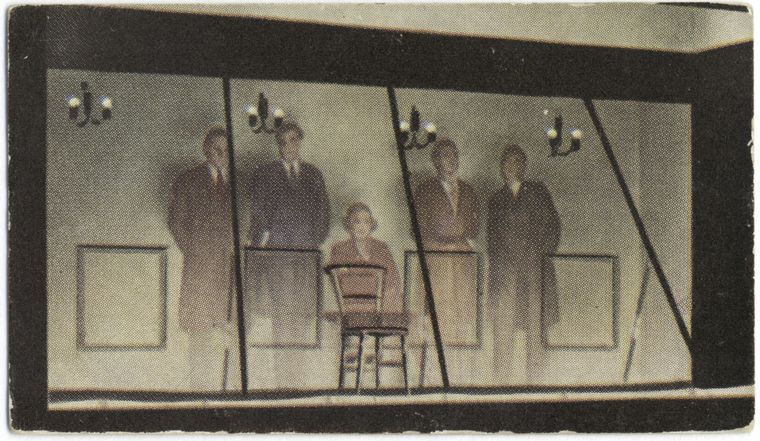Library Time Travel: Ruminations in Science, Literature and Film


In 1916, German astronomer, Karl Schwarzschild used the field equations to calculate gravitational effect of a spherical body, such as a star. If the mass could be extremely dense, then a highly concentrated singularity could form, the gravity would be so strong, anything pulled into it would never be able to escape. This highly dense gravity mass would be the center of a severe time distortion, light would never leave or escape its gravity, and thus the concept of a black-hole was born, out of Einstein's theory of general relativity.


The cyclical flow of time is sometimes symbolized by the Uroboros, the snake wrapped in a circle bringing its tail to its mouth. Another manifestation is the circular-shaped calendar, of which the Chinese version is among the most widely recognized. Current cyclical measurements of time include not only how we still use the earth's motions for recognition of the passing of days and years, but also how we divide these measurements into smaller portions. We repetitively use the same names for labeling the 12 months of the year, and use the same number of hours in a day, minutes in an hour, and seconds in a minute.


"Billy Pilgrim has become unstuck in time," as Kurt Vonnegut penned, or in the case of The Time Traveler's Wife by Audrey Niffenegger, the mechanism by which time is traveled is revealed to be known as Chrono-Impairment. A condition which is beyond the protagonist's control, so perhaps we all really just end-up becoming unstuck in time, but that's another post...
In physics there's natural and common occurrences, or sometimes not so common lab "enhancements, under certain circumstances, maybe a particle accelerator, or an interstellar wormhole, through a mulit-layered dimension, in an undiscovered or unrevealed universe, time travel has/will/can't happen. Maybe time-vistors walk amongst us, but we just don't know about it.

"I came in with Halley's comet in 1835. It is coming again next year, and I expect to go out with it. It will be the greatest disappointment of my life if I don't go out with Halley's comet. The Almighty has said, no doubt: 'Now here are these two unaccountable freaks; they came in together, they must go out together.'"
In Ambrose Bierce's story, Mr. Williamson encounters an unnatural event while walking across vacant field. He simply vanishes. His occasional disembodied voice still heard wailing for help to his grief-stricken helpless wife, who eventually goes mad over the mystery of his disappearance. So ok, maybe he didn't travel in time, but vanishing or teleportation is a good indication of time-travel.

Speaking of hurt, not all time travel has to hurt, sometimes it can get you laughs, like Peggy Sue Got Married, Back to the Future, Hot Tub Time Machine, Safety Not Guaranteed, Happy Accidents and, About Time.
One of the best works I've read on the subject can be found on Project Muse: Time Travel: A Writer's Guide To The Real Science Of Plausible Time Travel by Paul J. Nahin. Project Muse is available from home with a valid library card and onsite at NYPL.
I've come to the conclusion that time travel is possible, and not just forward.
Bring your library card and don't forget your imagination... Time sure can fly at the library!
If you don't like the future you see, build one in its place, and if you don't see a title in our catalog, please suggest it.
Read E-Books with SimplyE
 With your library card, it's easier than ever to choose from more than 300,000 e-books on SimplyE, The New York Public Library's free e-reader app. Gain access to digital resources for all ages, including e-books, audiobooks, databases, and more.
With your library card, it's easier than ever to choose from more than 300,000 e-books on SimplyE, The New York Public Library's free e-reader app. Gain access to digital resources for all ages, including e-books, audiobooks, databases, and more.
If you don’t have an NYPL library card, New York State residents can apply for a digital card online or through SimplyE (available on the App Store or Google Play).
Need more help? Read our guide to using SimplyE.


Comments
I came from the past to visit the future which is the present
Submitted by Matthew (not verified) on May 8, 2013 - 9:51pm
Time and Again
Submitted by Kristine (not verified) on May 9, 2013 - 10:44am
Time and Again
Submitted by Elizabeth Waters on May 17, 2013 - 5:40pm
DeLorean DMC-12 for sale - low space/time miles
Submitted by Nick (not verified) on May 9, 2013 - 12:24pm
I enjoyed reading your post!
Submitted by Julie Clark (not verified) on May 16, 2013 - 8:13am
I use my library card for time travel all the time!
Submitted by Elizabeth Waters on May 17, 2013 - 5:56pm
time travel book
Submitted by Guest (not verified) on May 8, 2014 - 3:59pm
Time Travel
Submitted by Sree Lakshmi K. R. (not verified) on February 25, 2017 - 11:48am